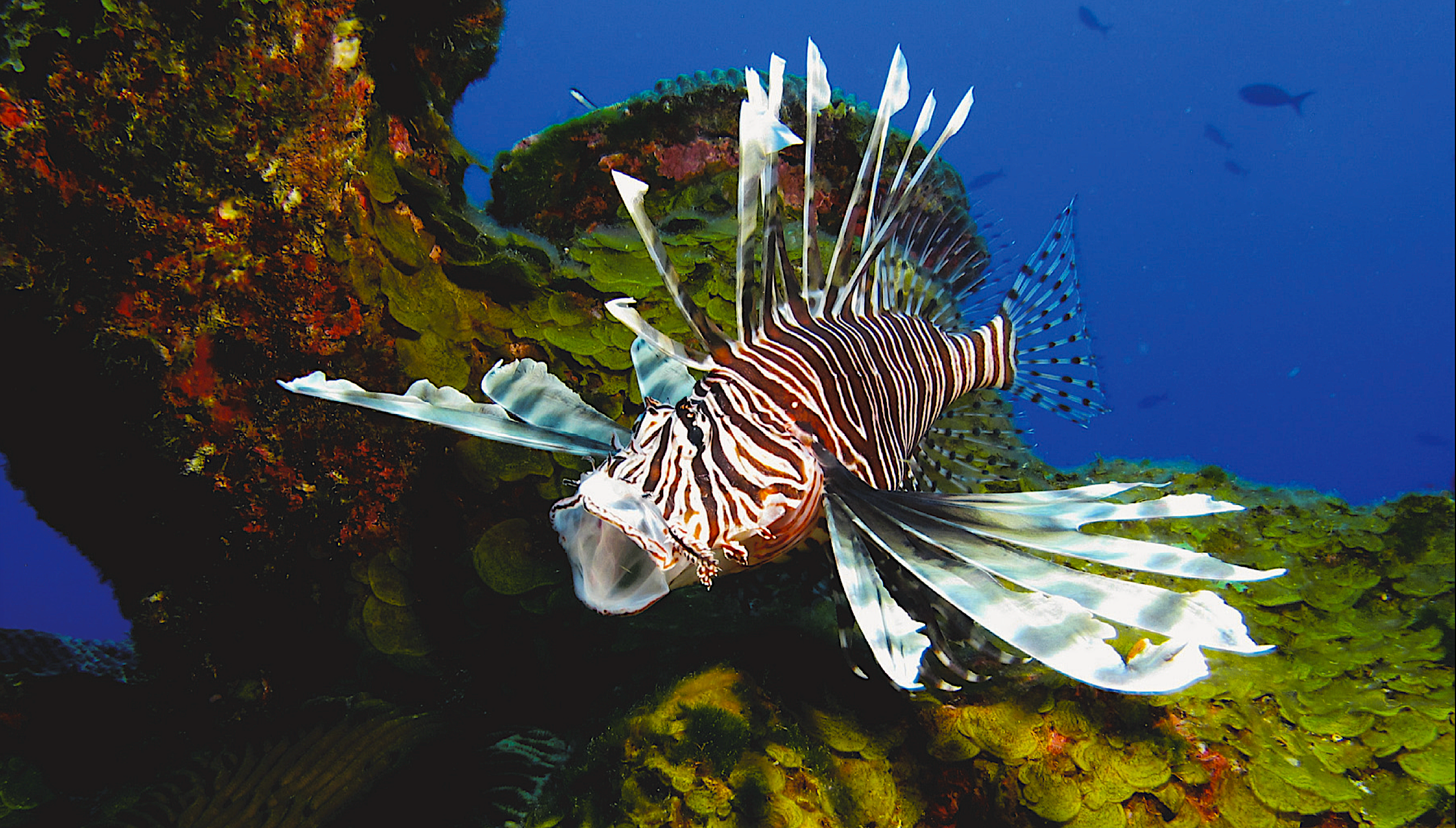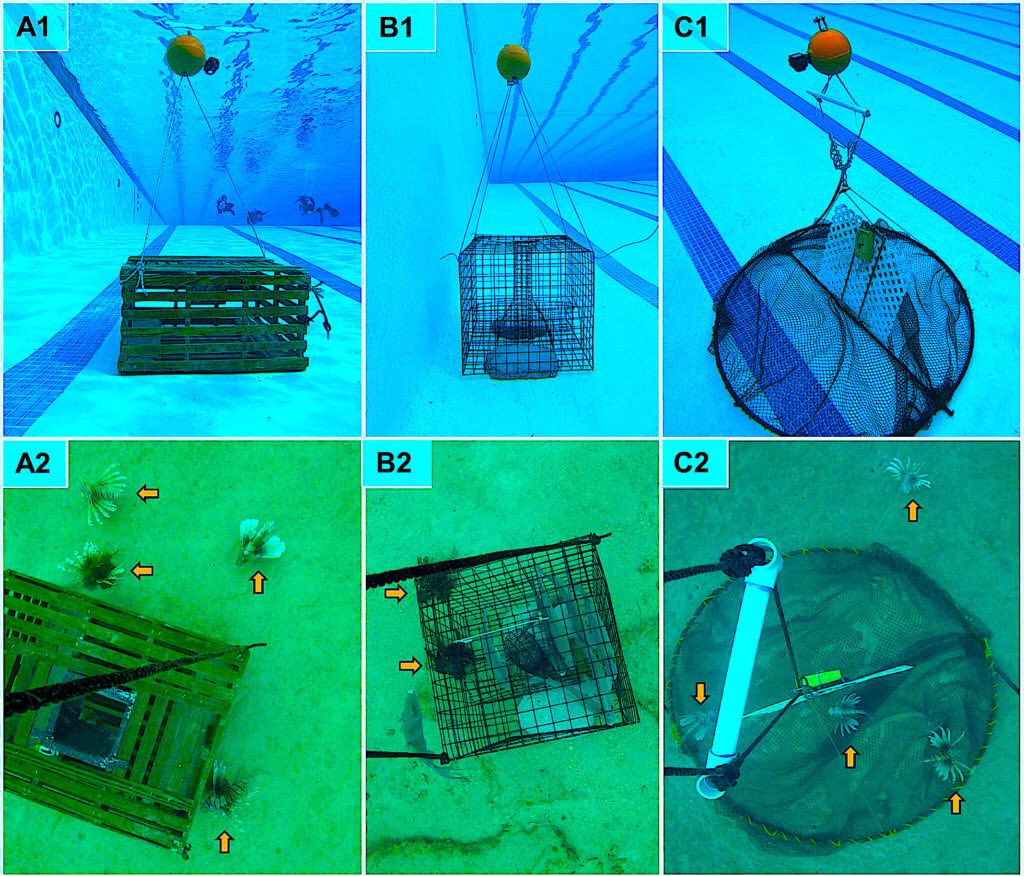Can We Use Deepwater Traps to Catch Lionfish?

Scientists compared how three different traps worked on the invasive species.
Research Need
The invasive lionfish has been problematic to everyone ever since their introduction into the U.S. South Atlantic, Caribbean, and Gulf of Mexico in recent years. With no natural predators in these waters, lionfish wreak havoc on both natural and artificial reefs by disrupting the aquatic food chain.
While research on lionfish has been extensive and has covered everything from identifying their preferred habitat to understanding what local fish they prefer to eat, most of the effort focuses on identifying how best to eradicate them — or least reduce their numbers so native fish can have a chance.
The good news is that lionfish are great to eat, and anything that makes capturing lionfish easier is grounds for further study. There’s likely a great opportunity to exploit this tasty finfish that’s so popular with consumers.
We know from recent research that targeted and consistent removals of lionfish from shallow reefs — those easily assessable to divers — have the potential to limit the fish’s impacts.
But what about deepwater reefs that lionfish frequent but divers can’t easily get to? Is there a fish trap that might be effective?
What did they study?
A team of scientists tested three types of trap on natural reefs at depths greater than 131 feet offshore of Pensacola and Destin, Florida, in the northeastern Gulf of Mexico: (A) a wooden-slat trap commonly used in the Florida lobster fishery; (B) a wire fish trap like the ones used in the U.S. South Atlantic black sea bass fishery; and (C) an experimental non-containment, slightly modified Gittings trap (as seen on this video).

They deployed each trap 100 times at 120 natural reef sites. Remotely operated vehicles surveyed the sites before and after trap deployments, and timelapse video cameras — mounted on the traps — documented the numbers and species of fish in the area, as well as whether they went into the trap.
Both lobster and sea bass traps were baited with Atlantic mackerel. The Gittings trap did not require bait.
What did they find?
While similar numbers of lionfish were attracted to the area surrounding each type of trap, the traps actually caught few lionfish. The Gittings trap captured more lionfish on average than the lobster or sea bass trap. Even so, this trap only averaged one lionfish per trap deployment.
Sea bass traps had high rates of bycatch, and the authors suggest this design is likely unsuitable for targeting lionfish. While the lobster traps had less bycatch than sea bass traps, the bycatch to lionfish ratio is likely too high for this type of trap to be a viable option either, at least as tested.
Anything Else?
Despite its limited success, the Gittings trap had operational issues. It failed to open 20% of the time, and one trap entangled a green sea turtle.
So What?
The authors make a strong case that more testing is needed, but the low catch per trap as tested is somewhat discouraging. One theory is that the numbers of lionfish at the study sites prior to trap deployment were low. Another is that the traps would perform better if they were in the water for two days and retrieved during dawn or dusk.
Reading
Harris HE, Garner SB, Tarnecki JH, Gittings SR, Chagaris DD and Patterson WF III (2023) Three trap designs evaluated for a deepwater lionfish fishery. Front. Mar. Sci. 10:1121642. https://www.frontiersin.org/articles/10.3389/fmars.2023.1121642/full
Florida Fish and Wildlife Conservation Commission (Grant No. FWC-13416-M3403) and National Science Foundation Graduate Research Fellowship Program provided funding for this study.
By Scott Baker
Lead photo: lionfish, courtesy of NOAA.
The text from Hook, Line & Science is available to reprint and republish at no cost, but only in its entirety and with this attribution: Hook, Line & Science, courtesy of Scott Baker and Sara Mirabilio, North Carolina Sea Grant.

- Categories:



